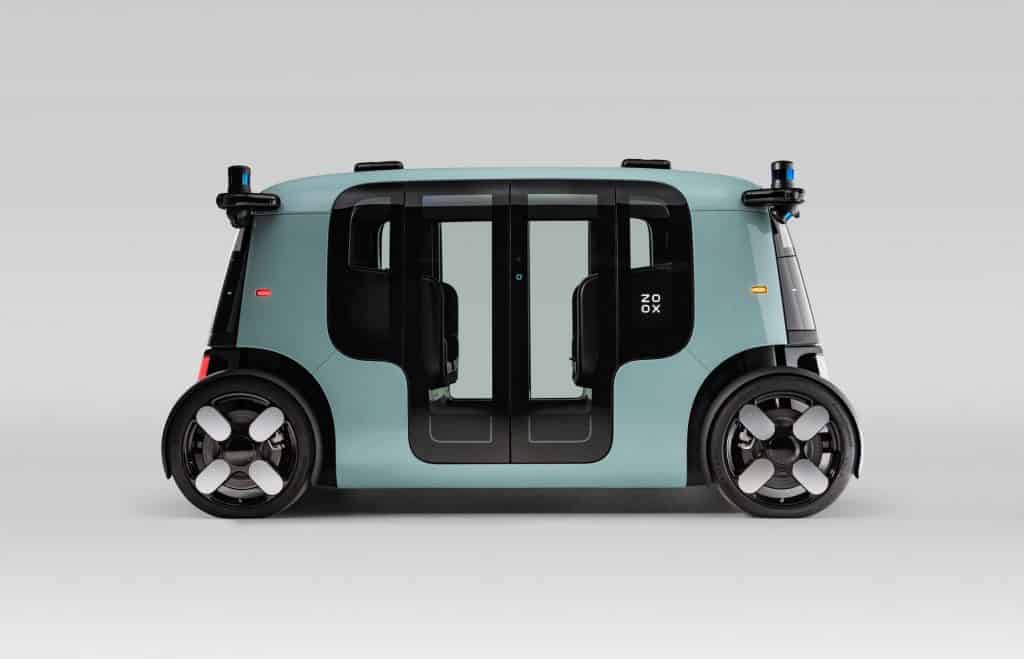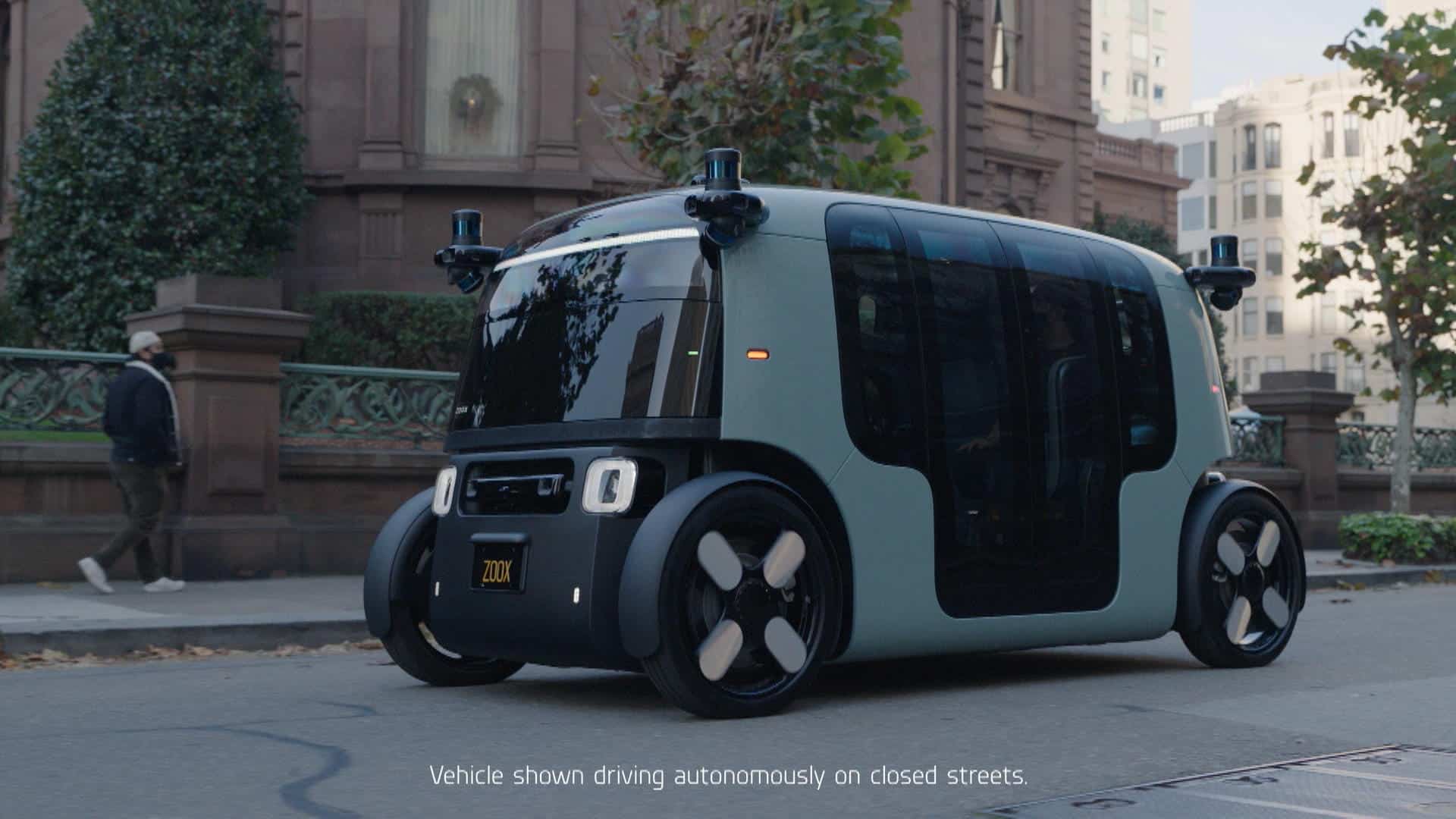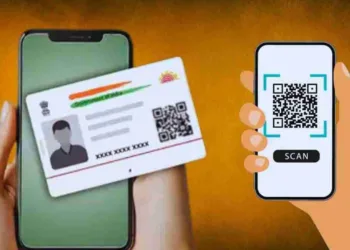Amazon.com Inc. owned Zoox Inc., a self-driving startup, revealed a fully autonomous electric vehicle which the startup describes as a driverless carriage or robotaxi that can drive day and night on a single charge.
The vehicle can carry as many as four passengers and contains two battery packs, one under each row of seats. With a max speed of 75 miles per hour, it has a motor at each end and travels in either direction. The battery packs generate enough energy for the vehicle to run 16 hours before recharging, the company said. With plans of commercialisation of the technology in mind, Zoox is considering an option to launch an app-based ride-hailing service in cities like Las Vegas and San Francisco.

In an interview with Bloomberg Television, Zoox Chief Executive Officer Aicha Evans said, “This is really about re-imagining transportation. Not only do we have the capital required, we have the long-term vision”. Evans also admitted that he is planning to launch ride-hailing services in other countries.
Without revealing any exact costs, the executives said that the rides would be “affordable” and prices will be competitive with services operated by Uber Technologies Inc. and Lyft Inc. The company did not confirm any launch date either. In a video released Monday, CEO Aicha Evans used Zoox’s app to hail the vehicle outside Fairmont hotel in San Francisco and went on a ride around the block.
Zoox was acquired by Amazon in June for an undisclosed sum. It is one of several companies competing to get fully autonomous vehicles on the road, an achievement that’s taking longer than anticipated. Most of the competitors are working on testing retrofitted conventional cars on public roads, and only a few are commercially deployed. One of the tech giants Alphabet Inc.’s self-driving unit Waymo started a completely driverless taxi service in suburban Phoenix in October. Cruise LLC, backed by General Motors Co., is also testing autonomous cars. Recently, in San Francisco, Cruise LLC. tested autonomous cars without safety drivers, using a fleet of electric vehicles based on the Chevy Bolt.
Quite a few of Zoox’s quirky-looking mint-green vehicles are already being built, despite being years from deployment, at a facility in Fremont, California. The eventual production capacity of the factory is 10,000 to 15,000 units annually, executives said. Suppliers send the major components such as the drive unit, battery pack, body, and so on, pre-assembled, and Zoox then does puts the final touches by assembling them in stages, a process it compares to building a Lego set. Executives denied revealing any information about the battery supplier.
For a company that has been working on an autonomous passenger vehicle since its founding in 2014, the unveiling of a production car marks a significant step. Chief Technology Officer Jesse Levinson admitted to Bloomberg TV that sometimes Zoox was “ridiculed” for what it was trying to do.
“Unlike many of the concept cars other companies have shown in the last several years this vehicle has passed all the FMVSS crash tests,” Levinson said, referring to tests required by U.S. regulators.
Alike Zoox, GM’s Cruise also unveiled a battery-powered shuttle, called the Origin, in January. It also does away with — pedals, rearview mirrors, steering wheel– many of the controls present in conventional cars.
Zoox’s robotaxi is smaller but similar overall. On each corner, a “sensor pod” is present and has a 270-degree field of vision consisting of a spinning laser sensor and other lidars and as well as cameras to help it navigate. Sitting atop of the vehicle is a pair of front-facing cameras, with other less-visible sensors mounted on the sides.
Zoox’s vehicle’s safety features include airbags which would help in the survival of the passenger in the event of a crash, which Zoox says is unlikely given its confidence in the technology. The company can manually take control of the vehicles remotely and interact with passengers in real-time. Zoox has said that for any privacy-related issues, passengers will have the option to blur images captured by the on-board camera.







